细菌感染是伤口愈合和皮肤再生过程中最常遇到的问题,因感染引起的严重炎症反应不仅显著增加感染相关的并发症,而且明显降低伤口愈合的质量。此外,细菌感染性慢性伤口治疗难度大、疗程长、费用高,给患者和社会造成巨大的经济负担。目前,临床上主要使用抗生素治疗感染性伤口。但是,因耐药性和缺乏合适的皮肤修复微环境,抗感染和伤口愈合的治疗效果并不理想。因此,如何有效抵御多药耐药性细菌感染并同时促进感染性伤口愈合和皮肤再生仍是目前亟需解决的一大难题。针对上述问题,西北工业大学张秋禹教授团队将具有优异电导率、良好生物相容性和较强抗菌能力的二维(2D)Ti3C2Tx MXene引入多功能水凝胶支架(HPEM)用于耐甲氧西林金黄色葡萄球菌(MRSA)感染的伤口愈合研究。
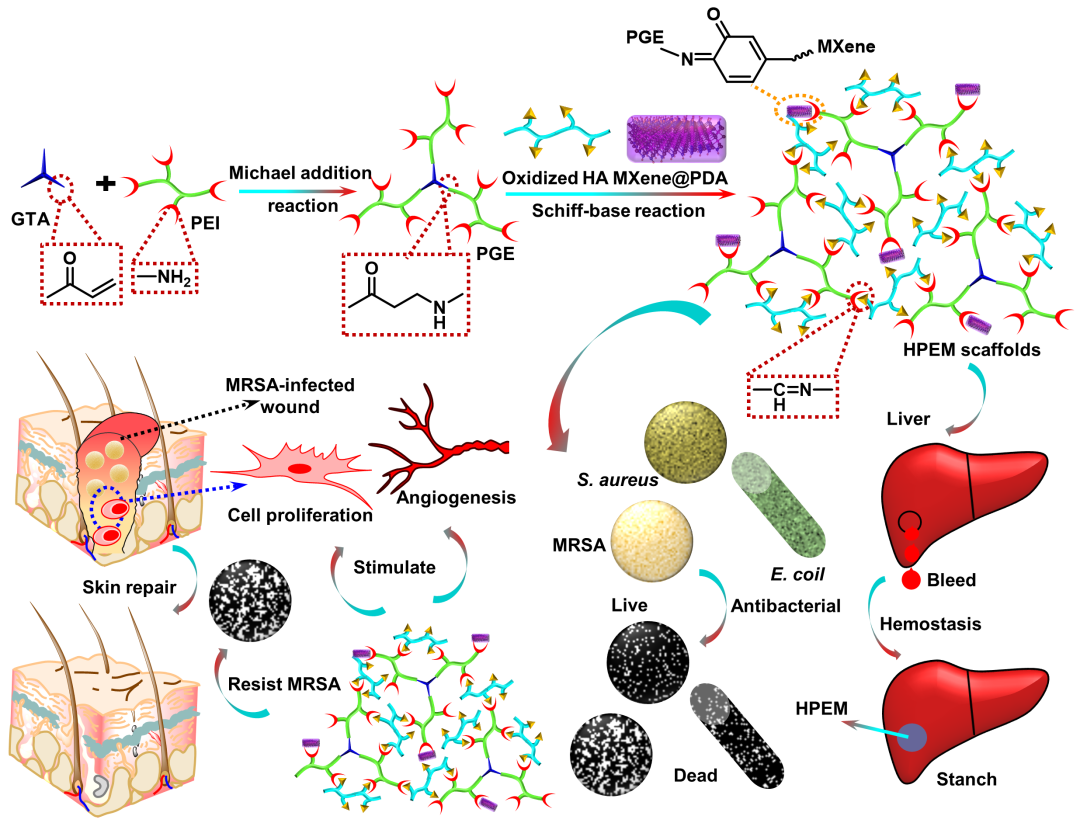
Scheme 1. Scheme showing the fabrication and application of HPEM scaffolds in multidrug-resistant bacteria infected wound healing.
通过合理的结构设计制备得到的HPEM支架具有多功能特性,包括自愈合、较高的导电性、组织粘附性、快速止血能力和较强的抗菌性,尤其是对耐多种常用抗生素的MRSA,其抗菌活性高达99.03%。(Fig. 2和3)。
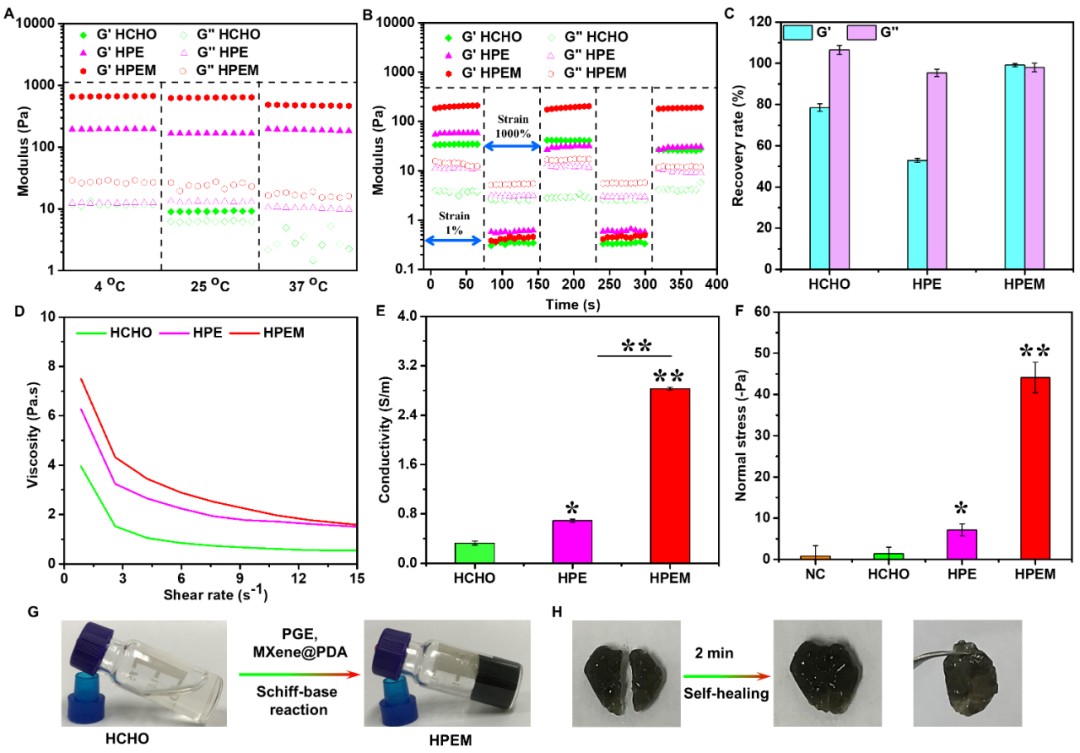
Figure 2. Multifunctional properties evaluations of scaffolds. (A) Rheological analysis of the HPEM scaffolds at 4℃, 25℃ and 37℃; (B-C) rheological data and rheological recovery rate of HPEM scaffolds under alternating high (1000%) and low shear strain (1%); (D) viscosity of HPEM scaffolds at different shear rate; (E) electronic conductivity of HPEM scaffolds and controls; (F) the normal stress to the adhesive ability of HPEM scaffolds determined by the TA rheometer (*p<0.05, **p<0.01, n=3); (G) the images of the HPEM scaffolds forming; (H) pictures of the self-healing of HPEM scaffolds.
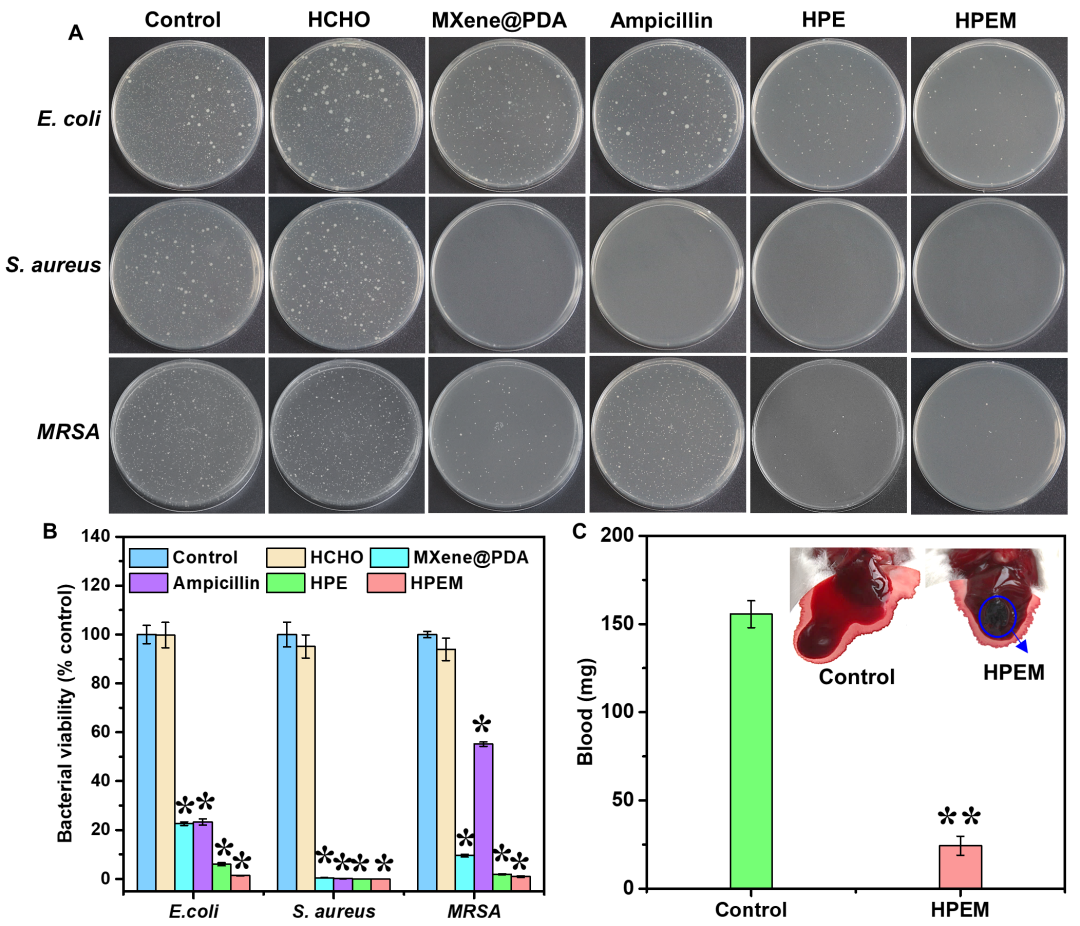
Figure 3. Antibacterial activity and hemostatic ability assay. (A) Bacteria clones and bacterial viability (B) against E. coli, S. aureus, and MRSA treated with different samples; (C) total blood loss and photographs from the damaged livers after 60 s treated with HPEM scaffolds and control (*p < 0.05, **p < 0.01, n=3).
为了进一步验证该HPEM支架的体内外生物效应,分别进行了体外细胞实验和动物实验。细胞实验表明:HPEM支架可有效促进小鼠成纤维细胞(L929)增殖,细胞毒性较低;而且,可促进皮肤修复相关基因(α-actin、collagen type III和VEGF)的表达,显示出了显著的促进皮肤缺损再生的生物学性能(Fig. 4和S7)。

Figure 4. Cytotoxicity and cell proliferation evaluations of scaffolds. (A) Cell viability of HPEM scaffolds and each composite in L929 cells at different concentrations for 24 h; (B) LIVE/DEAD staining images of L929 cells at 1 d, 3 d and 5 d after treated with HPEM scaffolds and controls (10 μg/mL) (live cells: green, dead cells: red, scale bar: 100 µm, n=3); (C) fluorescence intensity of L929 cells treatment with HPEM scaffolds and controls at 1 d, 3 d and 5 d (*p<0.05, **p<0.01, n=5). Cells without any treatment was used as negative control (NC).
在动物试验中建立MRSA感染的皮肤全层切除模型,并将该多功能支架填充于缺损部位。研究发现该支架通过有效的抗炎作用、促进细胞增殖和血管生成过程、刺激肉芽组织形成、胶原蛋白沉积、血管内皮分化和血管生成,可显著促进MRSA感染的伤口愈合(愈合率为96.31%)(Fig. 5和6)。
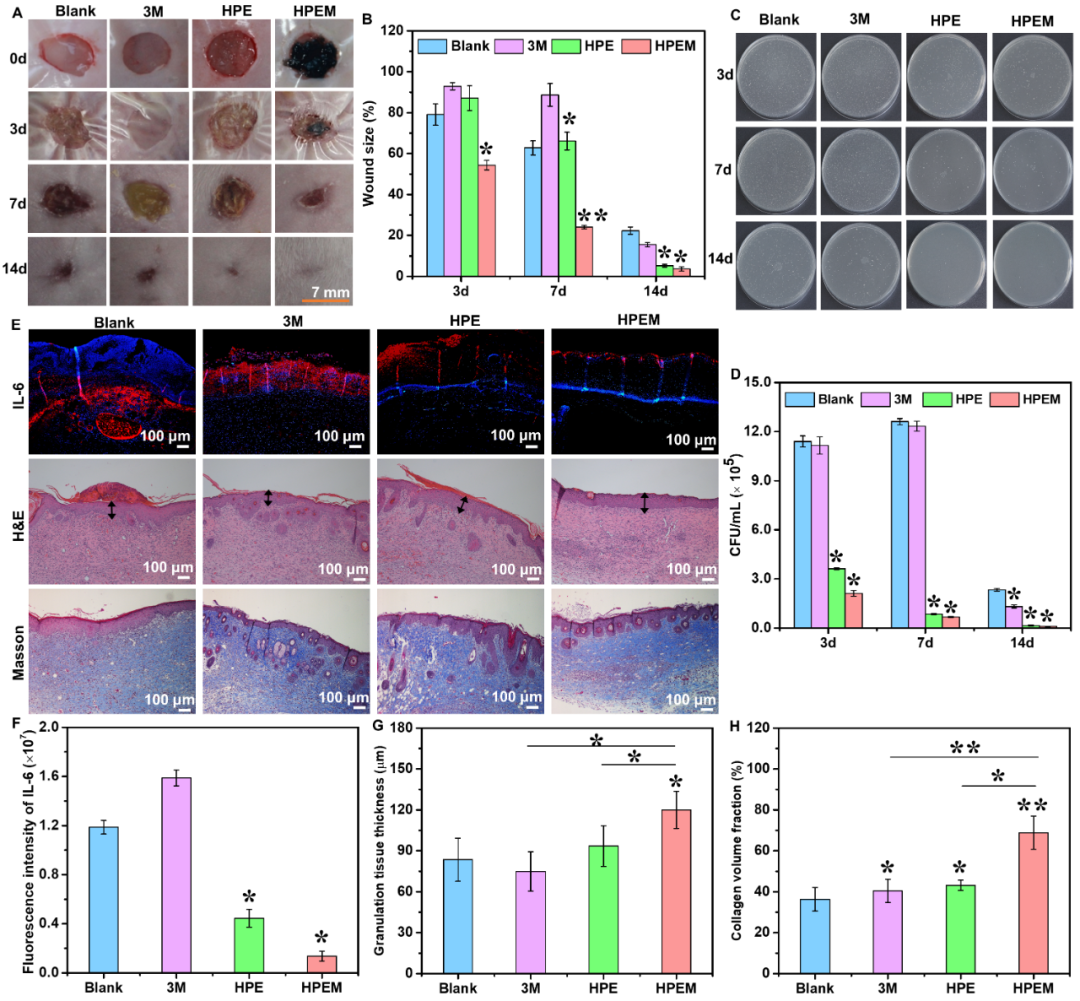
Figure 5. In vivo anti-infection and MRSA-infected wound healing. (A) Representative skin wound images at 0 d, 3 d, 7 d and 14 d, and (B) wound area size of the HPEM scaffolds and controls (*p < 0.05, **P < 0.01); (C) images of MRSA colonies growing on the agar plates derived from the homogenized infected tissues after various treatments at 3 d, 7 d and 14 d; (D) quantitative bacterial colonies densities based on (C); (E) IL-6 (red) immunofluorescence images at 3 d, H&E and Masson’s trichrome staining of wound tissues at 14 d, the black arrows showed the granulation layers in wound beds; Corresponding quantification of (F) fluorescence intensity of IL-6, (G) granulation tissue thickness and (H) collagen content in wound tissues based on (E) (Scale bar =100 μm, n = 6;*p < 0.05 and **p < 0.01).
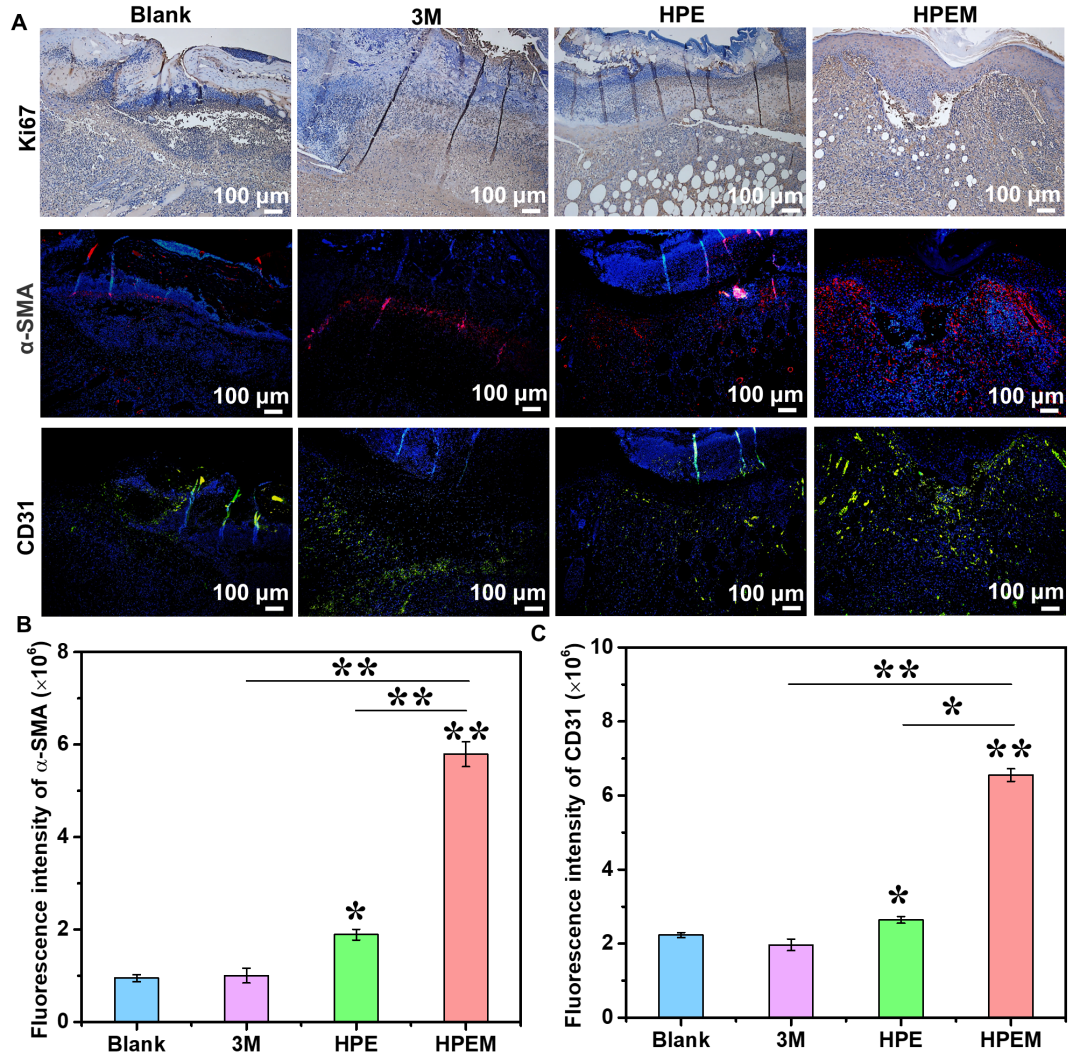
Figure 6. Immunohistochemistry and immunofluorescence staining of wound healing assay. (A) Immunohistochemistry of Ki67, α-SMA stained (red: α-SMA, blue: nuclei) and CD31 stained (green: CD31, blue: nuclei) images; (B-C) quantitative analysis of α-SMA and CD31 of wound tissues at 7 d, respectively (scale bar = 100 μm; n = 6; *p < 0.05 and **p < 0.01).
本研究表明多功能Ti3C2Tx MXene@聚多巴胺纳米片在感染性伤口愈合中的重要作用。此外,具有多功能特性的HPEM支架为MRSA感染的伤口愈合/皮肤再生提供了一种潜在的治疗策略。
以上相关成果分别发表在ACS Nano (2021, DOI: 10.1021/acsnano.0c06287)上。论文的第一作者为西北工业大学化学与化工学院博士后周丽,通讯作者为张秋禹教授。